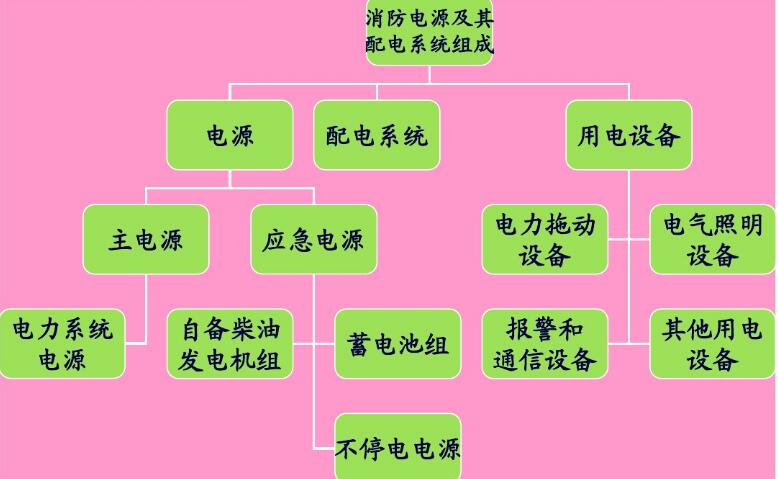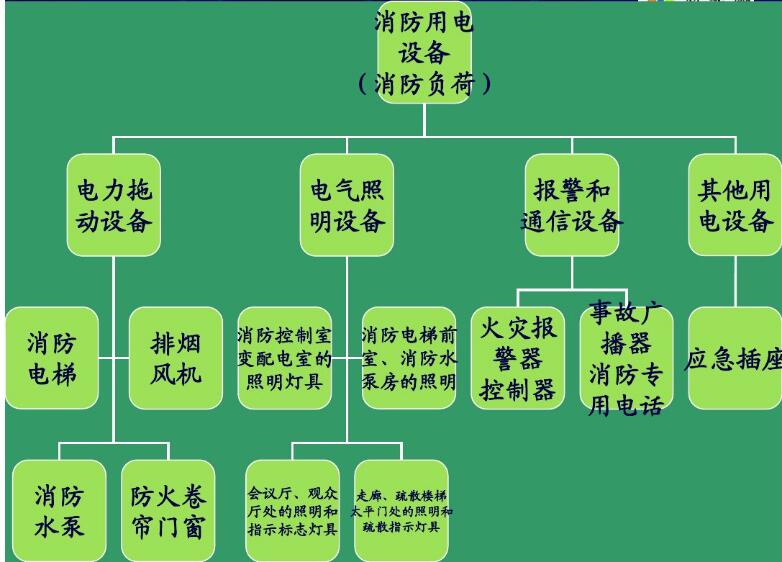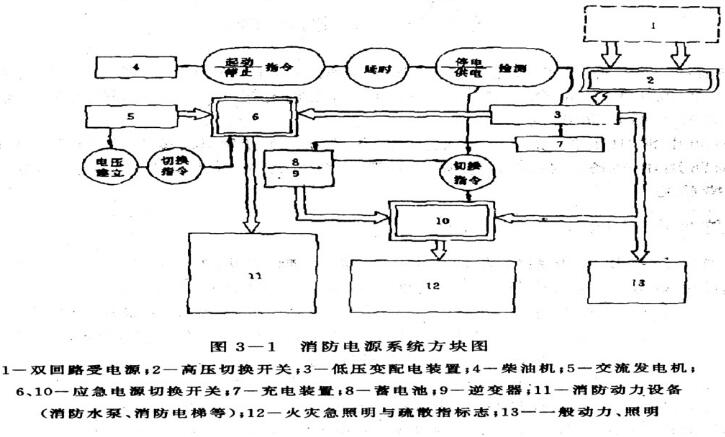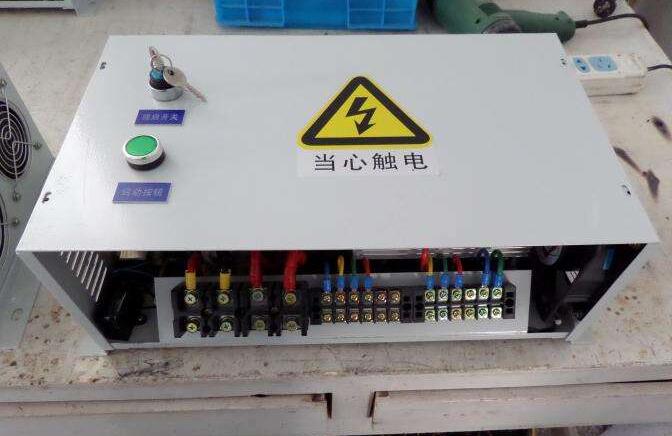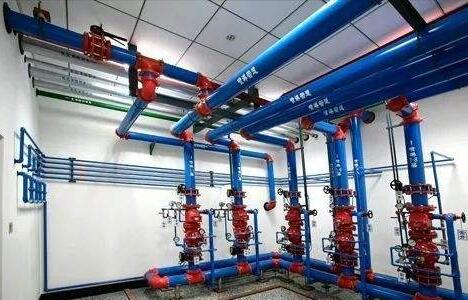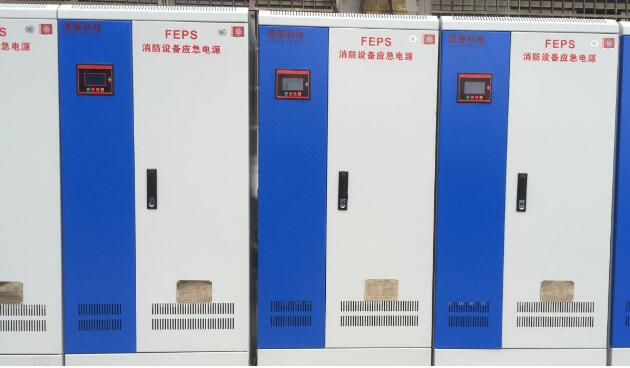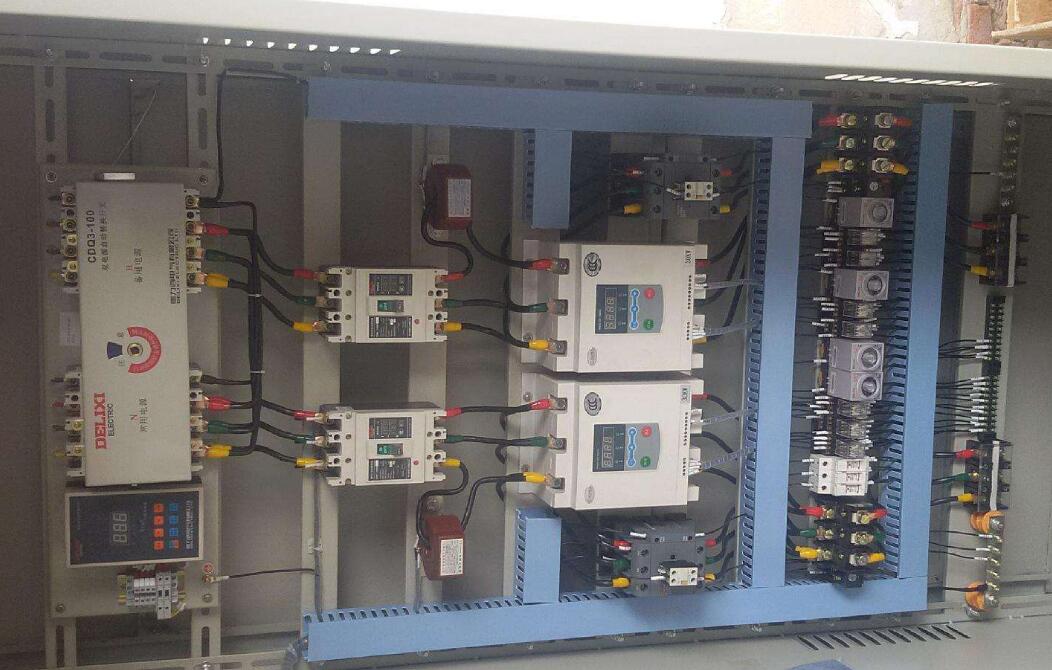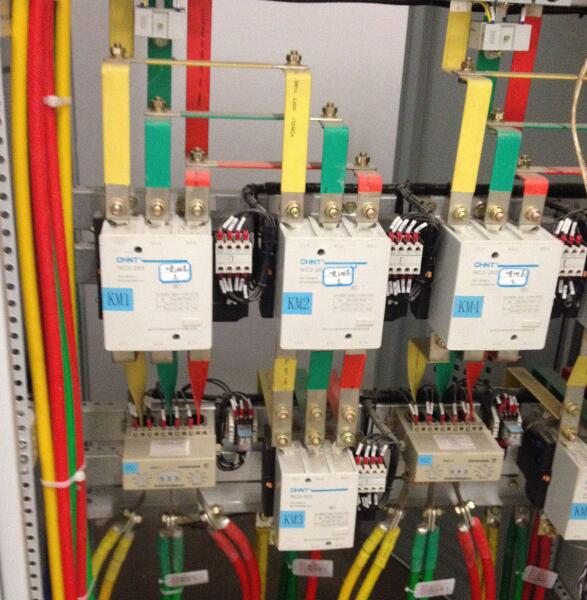Fire power supply and its power distribution system design
Fire power supply and its power distribution system System diagram of fire power supply Correct selection of the main wiring scheme of the low-voltage distribution system in the building is an important part of the electrical design of civil buildings. The design should be reasonably determined according to the height, scale and nature of the building. Generally, the higher the building height, the larger the volume, and the more difficult it is to save when a fire occurs. When the building height exceeds 100m, it can only be extinguished by self-rescue. Therefore, it is very important to ensure reliable power supply for fire-fighting equipment. In order to ensure that the fire load is not affected by the non-fire load, the main wiring of the low-voltage power distribution system adopts the group design scheme, which will undoubtedly greatly improve the reliability of the power distribution system. It is necessary to reasonably set short-circuit protection, overload protection, ground fault protection and over-voltage and under-voltage protection according to the nature and capacity of the load. (1) Power supply design for fire load The fire power supply shall be provided with a separate main circuit breaker at the low voltage outlet end of the transformer. It shall not share the same incoming circuit breaker and share the same low voltage bus section with the non-fire protection load. The fire power supply shall be set independently, that is, the fire power supply shall be separated from the low-voltage side closed busbar or the incoming line cabinet of the substation of the building into separate systems. If the building is a low-voltage cable entry, the fire power supply is separated from the lower end of the incoming isolation appliance to ensure that the fire power supply is independent of the building and improves the reliability of the fire load power supply. When the standby power supply in the dual power supply of the building is cold standby, and the input time of the backup power supply cannot meet the time when the fire load is allowed to interrupt the power supply, the emergency generator set should be set, and the input time of the unit should meet the requirements of the fire load power supply. (2) Design of fire backup power supply When the fire power supply is provided by the self-provided emergency generator set, the fire-fighting power load shall be set to the first or second level to set the automatic and manual start-up device, and supply power within 30s; when the medium-voltage diesel generator set is used, the fire shall be After confirmation, it should be powered within 60s. Between the working power supply and the emergency power supply, the automatic switching mode should be adopted, and the load capacity should be started in the order of large to small. The motor load starting interval should be between 10s and 20s. When a diesel generator set is used as a fire backup power source, its voltage level must meet the following requirements: (1) When the power supply radius is not more than 400m, low-voltage diesel generator sets should be used; (2) When the power supply radius is greater than 400m, medium voltage diesel generator sets should be used; (3) The line voltage drop should be no more than 5% of the supply voltage. The fire backup power supply shall meet the requirements for the continuous operation time of fire equipment during fire: Commercial buildings, exhibition buildings, comprehensive buildings, finance and financial buildings of libraries, libraries, library, important archives, scientific research buildings and hotels have a continuous operation time of 3 hours for fire pumps and 2 hours for other high-rise buildings; The water curtain pump of the fire shutter has a continuous running time of 3 hours; the continuous running time of the fire elevator should be greater than the continuous running time of the fire pump and the water curtain pump; the civil building with a building height greater than 100m, the pressurized fan and the anti-rowing The continuous operation time of the hood fire is more than 90min; for medical buildings, elderly buildings, public buildings with a total construction area of ​​more than 100000m2, the continuous running time in the fire shall be greater than 60min; other buildings shall be greater than 30min. When using FEPS as the backup power source, the initial capacity of the battery should be 3 times of the used capacity; the EPS capacity of the three-phase power supply should not be greater than 120kW, and the single-unit EPS capacity should not be greater than 30kW, and there should be a single battery protection and power balance. Device. (3) Power distribution design Fire pumps, spray pumps, water curtain pumps and fire elevators shall be directly discharged from the variable power station or main distribution room, using radial power supply; anti-d, exhaust fan, fire shutter and evacuation lighting may be used for radial or trunk Power supply. The two-way low-voltage power supply of fire-fighting water pump, smoke-proof and exhaust fan and fire-fighting elevator should be able to automatically switch in the equipment room. The power of other fire-fighting equipment should be able to automatically switch in each fire-zone distribution room; two of the fire control room The road low voltage power supply should be able to automatically switch in the fire control room. Equipment such as fire pumps, exhaust fans and positive pressure blowers cannot be used as control devices. Motor-based fire-fighting equipment cannot use EPS/UPS as a backup power source. The main fire pump is a motor water pump, the standby fire pump is a diesel water pump, and the main fire pump can be powered by one power source. The distribution box and control box of the fire-fighting equipment should be installed in the power distribution room, fire-fighting equipment room, power distribution room or electric shaft; when it must be installed in other places, the box should adopt fire-prevention measures and meet the fire-fighting equipment during the fire. Run time requirements. The protection electrical equipment set by the fire-fighting distribution line shall have short-circuit protection function, but it is not suitable to set the overload protection device. If the setting can only be used for alarm, it cannot be used to cut off the fire-fighting power supply. The fire pump is blocked by the fire seal due to the corrosion of the shaft seal. The starting current will quickly heat the cable. When the temperature reaches the set value, the power supply is cut off to prevent the electric appliance from operating. This is not allowed. If the overload protection is not set, the stall occurs, and the cable temperature rises by 100 ° C or 200 ° C. The effect on the cable of 750 ° C or 950 ° C is not very large. Under the action of the maximum torque, it is possible to overcome the motor shaft seal resistance and make the motor Gradually turn up. The distribution line of the fire load cannot be set with residual current action protection and over-voltage protection. Because in the special case of fire, regardless of the state or failure of the fire line and fire power, it is most important to supply power to the fire equipment. The distribution equipment of fire-fighting equipment and the distribution equipment of non-fire-fighting equipment should be installed separately; if it is necessary to install side by side, fire-proof partitions should be provided at the boundary. Fire-fighting power distribution equipment shall be provided with obvious signs, and special fire-fighting power distribution cabinets shall adopt red cabinets. 1. The fire-fighting electricity of the following buildings shall be powered by the primary load: 1. Class B, Class C and Class C warehouses with a building height greater than 50 m; 2. A class of high-rise civil buildings. "Fire-fighting electricity" includes fire control room lighting, fire pumps, fire elevators, smoke and smoke exhaust facilities, fire detection and alarm systems, automatic fire extinguishing systems or devices, evacuation lighting, evacuation signs and electric fire doors and windows, roller blinds, The use of valves and other facilities and equipment in normal and emergency situations. 2. The fire-fighting electricity of the following buildings, storage tanks (areas) and storage yards shall be powered by secondary load: 1. Plants (warehouses) with outdoor fire water consumption greater than 30L/s; 2. Combustible material storage yards, combustible gas storage tanks (areas) and Class A and B liquid storage tanks (areas) with outdoor fire water consumption greater than 35L/s; 3. Grain warehouses and grain silos; 4. Class II high-rise civil buildings; 5. Cinemas and theaters with more than 1,500 seats, gymnasiums with more than 3,000 seats, shops and exhibition buildings with a building area of ​​more than 3,000 m2, radio, television, telecommunications and financial and financial buildings at the provincial (city) level and above. Other public buildings with outdoor fire water consumption greater than 25L/s. 3. Fire-fighting electricity for buildings, storage tanks (areas) and storage yards other than Articles 10.1.1 and 10.1.2 of this code may be supplied with three-stage load. 4. For fire-fighting electricity, buildings with one or two-stage load supply shall be equipped with automatic and manual starting devices when self-supplied power generation equipment is used as backup power. When using the automatic start mode, it should be guaranteed to supply power within 30s. The power supply of different levels of load should comply with the current national standard "Code for Design of Power Supply and Distribution Systems" GB50052. 5. The continuous power supply time of the standby power supply for fire emergency lighting and light evacuation indication signs in the building shall comply with the following provisions: 1. The civil building with a building height greater than 100m shall not be less than 1.5h; 2. Medical buildings, elderly buildings, public buildings with a total construction area of ​​more than 100,000 m2 and underground and semi-underground buildings with a total construction area of ​​more than 20,000 m2 shall not be less than 1.0 h; 3. Other buildings should not be less than 0.5h. “Fire emergency lighting†refers to evacuation lighting and standby lighting in the event of a fire. For the continuous power supply time of the evacuation lighting backup power supply, the test and fire prove that when single, multi-storey buildings and some high-rise buildings are on fire, the personnel can generally be evacuated within 10 minutes. The continuous power supply time specified in this article takes into account certain safety factors, as well as the actual evacuation of personnel and the difficulty of evacuation of individual personnel. For civil buildings, hospitals and other places and large public buildings with a building height of more than 100m, due to the weak physical condition of the evacuated personnel, the large number of people or the long distance of evacuation, there will be a long evacuation time, so the continuous power supply to these places Time requirements have improved. In order to ensure the safety and reliability of emergency lighting and evacuation indication signs, the design should adopt centralized power supply as much as possible. No matter what method is used, the emergency backup power supply should be automatically input immediately after the main power supply is cut off, and the power supply can be continuously maintained. The power can meet the requirements of continuous power supply for all emergency power lighting and evacuation indication signs during the designed power supply time. This section refers to “underground, semi-underground buildingsâ€, including basements, semi-basements and separately constructed underground and semi-underground buildings. 6. Fire-fighting electrical equipment should use a special power supply circuit. When the production and living electricity in the building is cut off, the fire-fighting electricity should still be guaranteed. The power supply time and capacity of the standby fire power supply shall meet the requirements of each fire-fighting electrical equipment during the duration of the building fire. The term “power supply circuit†as defined in this Article refers to the lowest-level distribution box from the low-voltage main distribution room or the distribution electric room to the fire-fighting equipment or fire-fighting equipment room (such as fire pump room, fire control room, fire elevator room, etc.). Distribution line. 7. The fire-fighting power distribution trunk line should be divided according to the fire compartment, and the fire-fighting distribution branch line should not cross the fire compartment. 8. The power supply for fire-fighting control equipment, fire-fighting pump room, smoke-proof and smoke-exhaust fan room fire-fighting equipment and fire-fighting elevators shall be provided with automatic switching devices at the last-level distribution box of its distribution line. The last-level distribution box specified in this article: for the fire control room, fire pump room, fire-fighting and smoke exhaust fan room fire-fighting equipment and fire-fighting elevators, etc., is the last stage of the fire-fighting equipment or fire-fighting equipment room Distribution box; for other fire-fighting equipment, such as fire emergency lighting and evacuation indication signs, etc., is the distribution box of the fire protection zone where these electrical equipment is located. 9. For fire-fighting equipment powered by primary or secondary load, the distribution box shall be set independently; the fire-fighting equipment powered by three-stage load shall be set independently. Fire-fighting power distribution equipment should be clearly marked. 10. Fire-fighting distribution lines shall meet the needs of continuous power supply during fires, and their laying shall comply with the following requirements: 1. When it is applied (including laying in the ceiling), it should be protected by metal conduit or closed metal tank box. Metal conduit or closed metal tank should be protected by fire protection; when fire-retardant or fire-resistant cable is used and laid When cable wells and trenches are used, they can be protected without metal conduits or with closed metal tanks; when mineral insulated non-combustible cables are used, they can be directly applied. 2. When dark coating, the pipe should be laid and laid in the non-combustible structure and the thickness of the protective layer should not be less than 30mm. 3. Fire-fighting distribution lines should be laid separately from other distribution lines in different cable wells and trenches; if there are difficulties to be laid in the same cable well or trench, they should be placed on both sides of cable wells and trenches, and Fire-insulated distribution lines shall be made of mineral-insulated non-combustible cables. Vacuum UV Curing Machine,Vacuum Curing Machine,UV Machine Shenzhen Jianjiantong Technology Co., Ltd. , https://www.jjtphonesticker.com